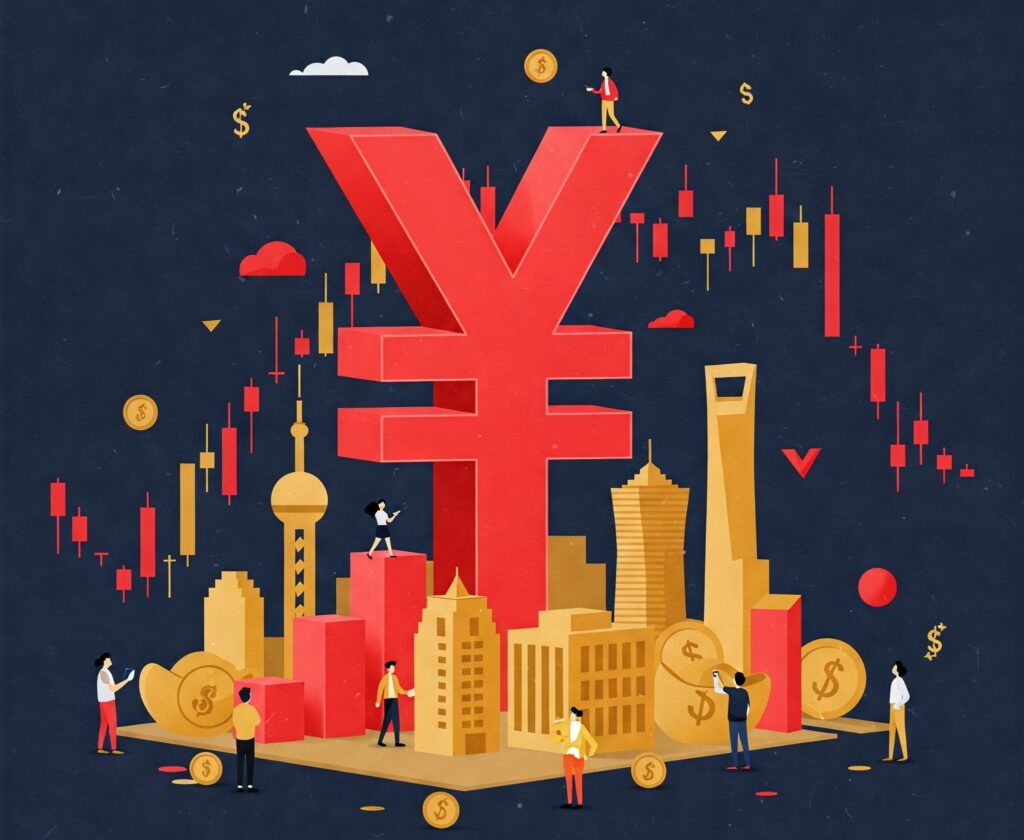
It’s easy to look at China stock market as just another financial playground filled with red and green arrows. But behind every index move and policy announcement, there’s a deeper story—a story of ambition, control, globalization, and pushback.
A Unique Beast: What Makes China’s Markets So Different?
Let’s start with the basics. China’s stock market isn’t exactly like Wall Street or Tokyo’s exchanges. It’s a mix of controlled capitalism and state oversight. The two primary exchanges—the Shanghai Stock Exchange (SSE) and Shenzhen Stock Exchange (SZSE)—may feel familiar in structure, but the players and rules differ wildly.
Many of the companies listed are state-owned enterprises (SOEs), and the largest shareholders? Often the government itself. That’s like Uncle Sam owning a big chunk of Apple or Ford and then also writing the rulebook for the NYSE. This setup gives Beijing incredible leverage to stabilize or stimulate the market when things go south.
But that control also makes foreign investors nervous. Especially when the line between economic management and market manipulation gets blurry.
Global Aspirations Meet Political Tensions
In the 2000s and early 2010s, China worked hard to make its markets look attractive to international investors. Big Chinese tech giants like Alibaba and JD.com listed on U.S. exchanges, raising billions and symbolizing a new era of financial integration.
But those days are cracking under pressure.
As seen in the recent April 2025 headlines, the U.S. is no longer shy about threatening to delist Chinese firms. The concerns? A lack of transparency, national security fears, and the Chinese government’s refusal to let foreign regulators audit company data.
In response, China has been building up its domestic markets—especially the Beijing Stock Exchange (BSE)—and promoting listings at home instead of abroad. It’s part of a broader strategy of financial “decoupling” from the West.
So now, the dynamic looks something like this:
- The U.S. is pushing Chinese firms out.
- China is pulling them back in.
- And global investors? They’re stuck in the middle, trying to read the room.
Stimulus, Sentiment, and Saving Face
Earlier this year, Chinese equities were in free fall. Investors were jittery about the real estate crisis, low consumer confidence, and sluggish post-COVID recovery. Tech stocks had lost their luster, and property developers were defaulting like dominoes.
So what did Beijing do? Exactly what it always does when the economy stumbles: it stepped in—hard.
- The People’s Bank of China (PBoC) cut rates.
- Mortgage restrictions were eased.
- Funds were pushed into key sectors.
- And financial state media began publishing “optimistic” commentary, clearly designed to lift public confidence.
Within weeks, it worked—at least temporarily. The CSI300 index saw its best weekly gain since the 2008 crisis. International outlets called it a “stimulus-driven rally.” But here’s the catch: it felt more engineered than earned.
The Trust Issue
Despite the rebound, a key issue remains—trust.
Foreign investors continue pulling money out of Chinese markets, with billions flowing into other Asian economies like India, Vietnam, and Indonesia. The unpredictability of government intervention, opaque accounting practices, and rising geopolitical tensions make it hard to commit long-term capital to China.
Even domestic investors aren’t immune to the jitters. For years, average Chinese citizens treated the stock market like a casino—fun to play, but not a place to park life savings. That sentiment hasn’t changed much, despite the government’s best efforts.
So, Where Does This Leave China’s Stock Market in 2025?
It’s at a fork in the road.
On one side, China wants to modernize and internationalize its financial markets. It wants the world to see it as a credible global economic leader with robust, mature capital markets.
On the other side, it’s reluctant to give up control—of its currency, of its companies, and of the narratives around them. That reluctance leads to friction with global regulators, nervousness among investors, and barriers to integration.
Conclusion: The Long Game Is Still On
China’s stock market is not collapsing. Far from it. It’s evolving—painfully, slowly, but strategically. The country still has immense economic strength, and its financial markets will continue to play a central role in Asia and the broader emerging world.
But to truly become a trustworthy global financial center, China must address the elephant in the room: can it let the markets breathe, even when they misbehave?
That’s the story still unfolding in 2025.
References
- Economic Times – Trump hints at delisting Chinese stocks from US indices
- Indian Express – China retaliates, Shanghai rebounds amid hope for dialogue
- Business Today – Asian markets surge, China gains on stimulus hopes
- CNBC Shanghai Composite – Real-time Index Tracker
- Trading Economics – China Stock Market Index (XIN9:IND)
- Investing.com – Chinese Indices Overview
- Wikipedia – Shanghai Stock Exchange
- The Guardian – US-China Tariff News (April 2025)
- Times of India – Chinese Stimulus and Market Response
- Axios – U.S. Delisting Threat and China’s Policy Moves
